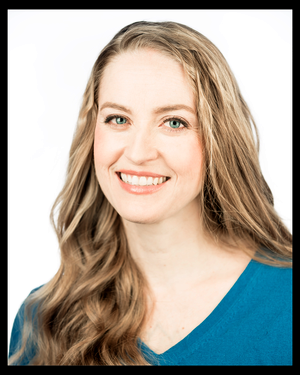Spotlight on Faculty: Heather Fitzsimmons Frey
1) Who are you?

My name is Heather Fitzsimmons Frey and I am a Banting Post-Doctoral Fellow at York. I’m working with Marlis Schweitzer in Theatre Studies in Art, Media, Performance and Design. One of the reasons she is a great mentor for me is that we are both interested in performance-based historiography—that is, the method of using embodied performance work to gain insights about history. I describe my work as conducting research regarding performance for / by / and with young people, which means that I am interested in the creative work that professionals make for kids, that are made by children themselves, and that include children as performers and creators, in professional, educational, and amateur settings. My post-doctoral fellowship in particular is called “Rehearsing Revolutions: Girls, Amateur Theatre, and Encounters Between 19th and 21st Century Girls”
2) Tell us about a creative or research project that you have been immersed in recently.
I’m really excited about my Post-Doctoral research workshops. They allow me to connect 21st century girls (according to the Victorian middle-class definition of girlhood, which is female and “very young” to “unmarried but still marriageable”) with 19th century girls. I’m not talking about spiritualism – I’m talking about intellectually encountering girls from the past through trying to imagine what they did, and thinking about our own lives in relation to the lives of girls of the past. At my last workshop, the participants (who were all University students or faculty)examined some proto-feminist 19th century scripts, danced the quadrille and a so-called “gypsy” dance, and discussed racial constructs, and the highly problematic ways that amateur performance spaces enabled girls, as one of my participants put it, “to have fun being racist”, and to set up structures where gender performance expectations could be challenged because it was “acceptable to be unacceptable.” At the research workshop I’m launching in a few days, I’m experimenting with the challenges of bringing a span of girlhood ages together in the same space (about 6 – 26). Typically in the 19th century, all the girls in the extended family and sometimes nearby friends worked together to create an amateur performance for the entertainment, education, and benefit of the whole family. I’d like older girls to look at racial constructs and instructions for dancing, and think about working with younger girls, together on the same creative project. The process involves 21st century girls theorizing their own lives, and the lives of girls in the past, by actually trying to do something of the things that girls of the past did.
3) What production or artist or scholar has had the most impact on you over the course of your career? Is there an image or a quotation that inspires you?
Between the ages of 3 and 16 I had the privilege of dancing with Alberta Children’s Creative Dance Theatre, based at the University of Alberta in Edmonton. The women who taught there and supported the programme included Joyce Boorman, Sally Carline, Ann Kipling-Brown, and Jan Vallance, and I learned so much about creative process, structure, and children from them. Their wisdom and ideas influenced me in the moment, and also upon reflection later. I travelled to England a few years ago to visit Joyce, and she told me that before every children’s dance class she taught, she said a little prayer: that she could disappear so that the child could appear. I realized that her profound prayer has influenced all the ways that I create, conduct research, and do scholarship. It takes an enormous amount of preparation, planning, and research, but the better prepared I am, the more invisible I can be. I don’t have any illusions about being unbiased, and I certainly believe that positionality matters. However, no matter who my research participants are, or what the subject of my work is, I try to get myself out of the way as much as possible so that whatever actually matters shines through.